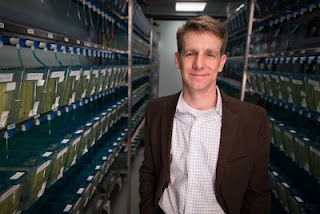 |
| Sugarcane field |
As
the world continues to warm up due to excessive use of fossil fuels, climate
change mitigation efforts are now greatly focused on producing such resources
of energy which are energy efficient and eco-friendly at the same time.
Sugarcane based liquid biofuels have been an important component of 1st
generation and 2nd generation biofuels, however excessive demand of
fuel has always been a challenge to deal. In this regard efforts focused on
improving biofuel quality is of great significance.
The Challenge:
Sugarcane
is generally rich of sugar molecules as it is a primary source of sugar based
products and also traditionally have been used for
the production of bioethanol for decades. A key challenge in this entire
process is the “digestibility” which is the excess of various enzyme molecules
to sugar content. Efforts have been made to enhance this efficiency during the
stages involving production of 1st generation and 2nd
generation biofuels, and it was only recently that with advent of modern gene
editing technology a breakthrough has been achieved.
The Solution:
Research
team from Brazil Ministry of Agriculture have been working to increase
sugarcane content efficiency, the team carried out two different experiments
targeting specific traits. In the first experiment the team focused on genes
responsible for the production of acyl-transferases molecules and factors
responsible for the rigidity of cell wall. The resultant product was the
variety of cane with better access for enzyme to sugar content during
hydrolysis process, which makes overall extraction of useful compounds from
plant biomass more convenient. In a second related study the research group
focused on enhancing the concentration of sugar content for this the silenced a
gene responsible for production and relocation of sugar molecules and the
silenced gene resulted in production of nearly 15% additional sucrose in stem
portion while an increase of nearly 200% was observed in leaf portions. This also
resulted in excessive production of glucose and fructose in it.
The
resultant variety produced can result in higher quality production of
bioethanol and production of better digestible products in animal feed as well
creating opportunity for developing more high value addition industries in future.
Conclusion:
With
annual production reaching near to 200 million metric tons better production of
sugarcane and its products will be crucial for ensuring food production and
climate change mitigation by increasing liquid based biofuels productions. In this
view creating new varieties with modern technologies like CRISPR will be of
great importance for future.



















